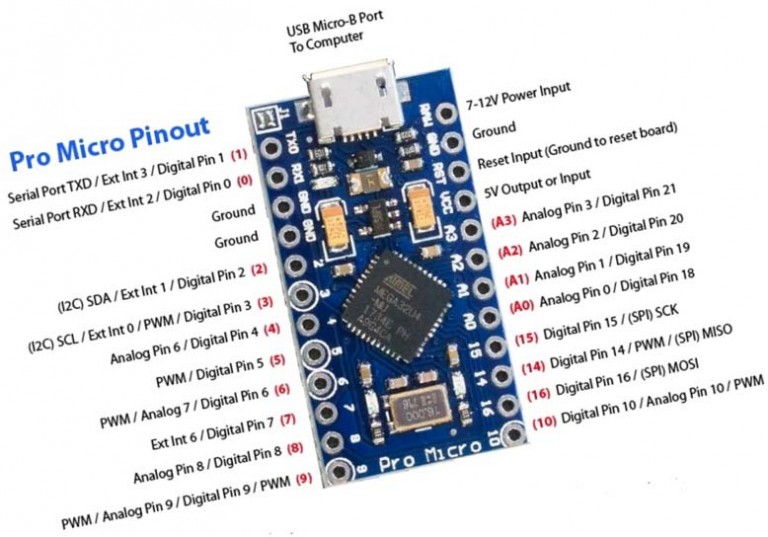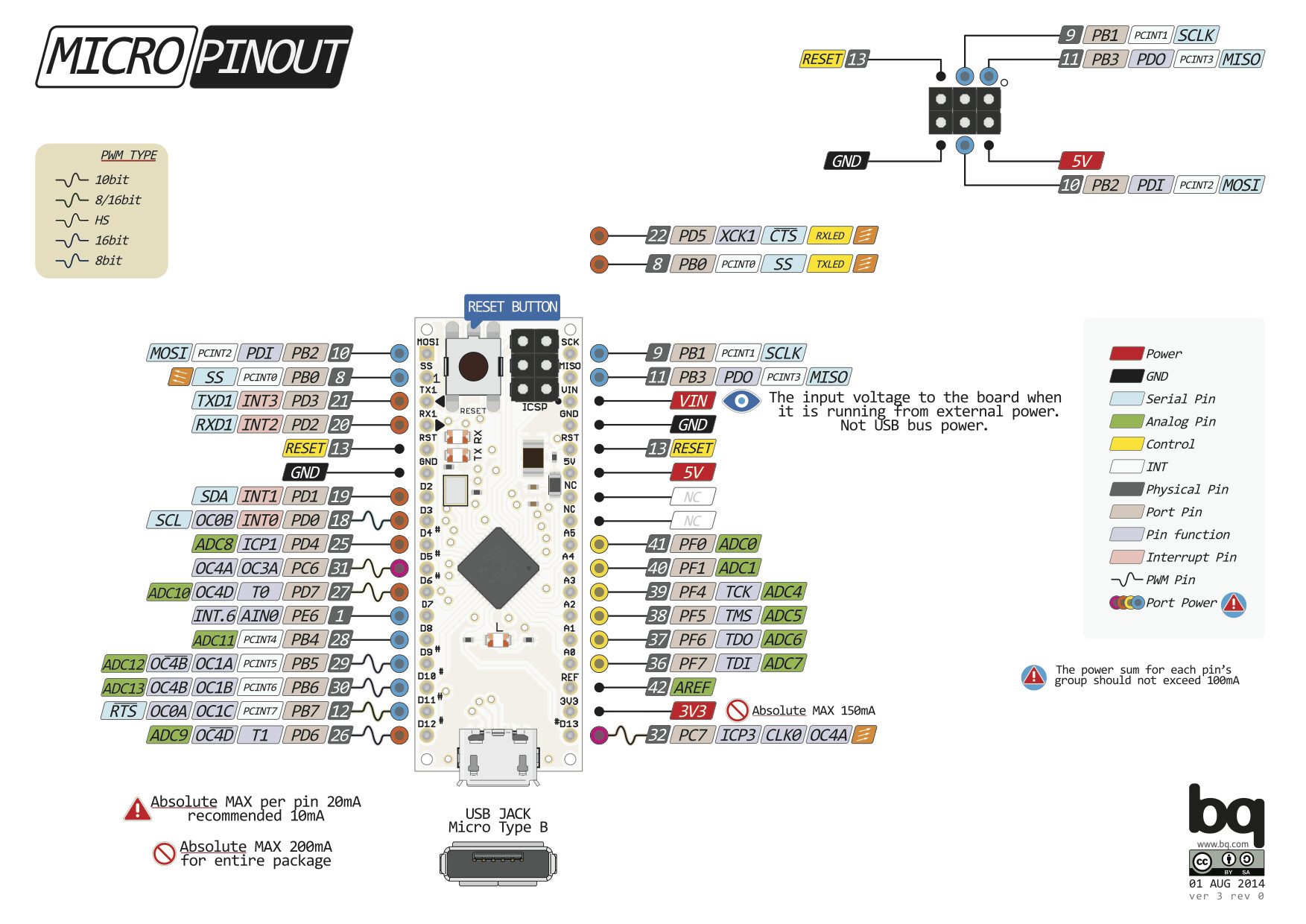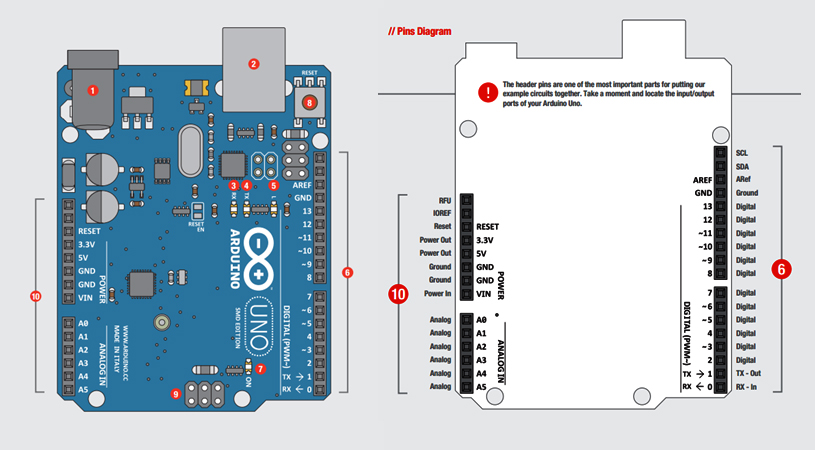
Arduino pro micro pinout windows#
Arduino pro micro pinout ps2#
This uncaps the scanning rate on the buttons of the controller (although this will still be limited by the internal PS2 circuitry), logging all the button changes to an internal list.

Optionally, enable and configure Queue based inputs.
Arduino pro micro pinout ps3#
You can also change the Controller Output Type here too if you would like to emulate a different type of controller, such as a drum set, a standard controller or even a controller for a different console, like a PS3 or a Switch.Change Controller Connectivity Type to PS2.You will be taken to following the configuration screen. Once it finishes, Click Start Configuring.Click Start programming and wait for it to program.Note that you need to get the voltage right, otherwise your device will not work and will need to be reset. For the Micro, Leonardo and Pro Micro, please pick the type of device you have in the dropdown.You will be met with the following screen (Note that it will be slightly different for an Arduino Uno or Arduino Mega) Using a Pico and don't see your device? Unplug the pico, hold the bootsel button, and plug it back in.Your Arduino should show up, like in the following image. Note if you are on linux, you may need to follow the steps outlined in the instructions.Connect the gnd pin on the wii breakout / extension cable to the gnd on your Arduino.

For arduinos that can output 3.3v natively, you can hook this straight up to 3.3v, but for a 5v only board like the pro micro 5v you will need to use a 3.3v voltage regulator to get a stable 3.3v voltage.

Note that for anything that isn't the 3.3v pro micro or pi pico, you will need to connect these pins using a level shifter. A diagram showing the correspondence between the pins on an Arduino board and those of the ATmega32U4 microcontroller. Note that for anything that isn't the 3.3v pro micro or pi pico, you will need to connect this pin using a level shifter.Ĭonnect Acknowledge to Acknowledge, Command to MOSI, Data to MISO and Clock to SCK.


 0 kommentar(er)
0 kommentar(er)
